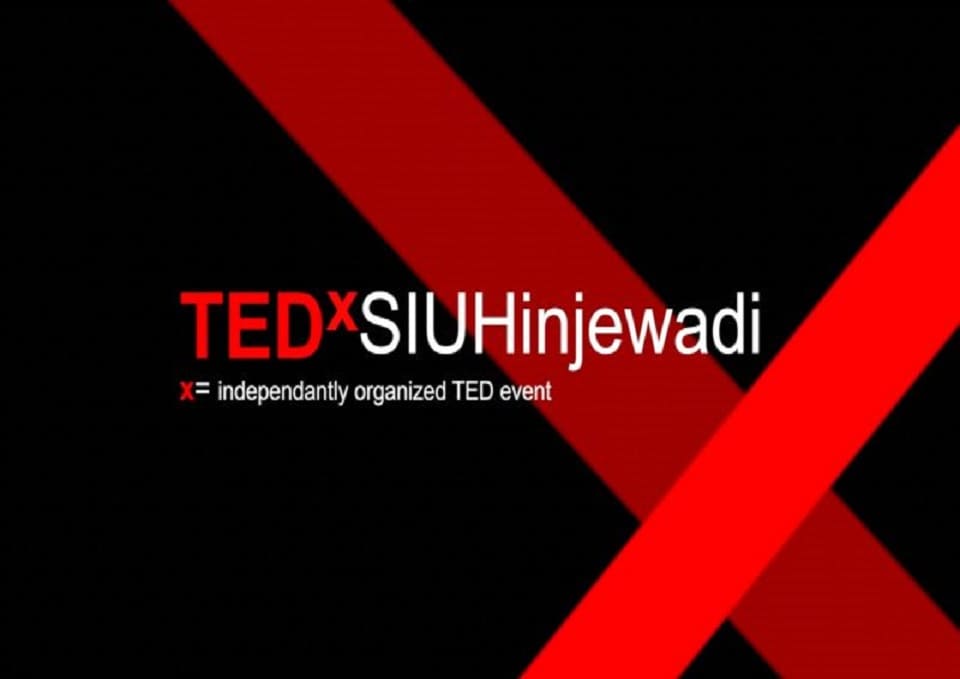TEDx SIUHinjewadi 7th edition

The much awaited TEDx SIUHinjewadi 2021 event commenced in an online mode on 17th April, 2021. This time there were 5 speakers and 3 performers.
The first speaker was Asmita Marwa, an Indian fashion designer. She inspired everyone to be the best version of themselves. She is rated by Vogue as one of the top nine international designers. Drawn by the mysteries of the human mind she graduated in psychology but destiny and passion for fashion made her choose fashion as a career. She got the inspiration of sustainable fashion from her grandmother who used to refurbish everything to make creative things from the old and worn-out things. In 2003, she launched her own brand. Her production line is completely zero-waste where the fabric waste is seen as a treasure from which something unique can be made. In 2008, she had her first collection with Loreal. She advised not to go for quick-fashion, but for something that can be worn in several ways and for multiple occasions to avoid clothes landing in dumps.
The next speaker was Professor Ranga Dias who completed his B.S. from the University of Colombo, Sri Lanka in 2006 and Ph.D. in Physics from Washington State University in 2013. He demonstrated how by using a very simple high pressure photochemical synthesis, a new material can be made out of ordinary Carbon, Sulphur and Hydrogen material. The magic material becomes a superconductor at room temperature which is useful for aerospace domain, computing and for lossless storage, transfer of energy.
Next Nikhil Raj amazed everyone by his card pulling trick. He read the mind of 1 volunteer, and pulled out the exact card thought by the person . He even intuitively knew what card would be picked by his next volunteer and had posted the same on his Instagram handle even before the magic show.
The next speaker was Mr. Matthew Genge, a Planetary Scientist by profession. He also has an 8 kms wide asteroid named after him. He focused on the dire need to reduce carbon footprints. Burning fossil fuels which provides cheap energy emits so much Carbon Dioxide that it traps heat from the Sun and causes global climate change. Since the Industrial Revolution, we have increased the global temperature by 1° C. This has caused extreme weather events leading to some parts of the planet being completely inhabitable. If we don’t do anything about climate change it can cause ecosystem collapse, affect food production and even end our civilisation. The solution for this is to use renewable energy by using wind, hydroelectric, solar energy and tidal power energy. However, the energy needs to be stored using high-capacity batteries that demand new resources like Nickel and Cobalt. The global demand for nickel is 2 million tonnes per year. This demand will double in 2040 as more people will have electric vehicles. Today looking for copper is like looking for a needle in the haystack as Copper isn’t easily available on the Earth surface anymore due to copper mining for the past 4000 years. Without copper the industries can’t function to make desired commodities. The yearly demand for Copper is 28 million tonnes which is enough to fill the Empire State Building three times over.
Next Mr. Harshil Bhandari surprised the audience by his unique artistic talent. His painting depicted the treasure that lies within.
The next speaker was Dr. Mimansa Singh Tanwar, a clinical psychologist with the Department of Mental Health Behavioural Sciences Fortis Healthcare. She talked about the effectiveness of prevention over cure. Suicide continues to be the third leading cause of death between 15 to 19 years of age. The constant demand of modern day life, rush, pressure of appraisals, performance, urban loneliness, changes in family structure, feelings of isolation, lack of support, rising aggression, etc. puts a lot of pressure on mental health. 10%-20% of the children and adolescents have a diagnosable health condition. The focus needs to be on prevention, resilience and being in an environment of mental health wellness. Corporate, schools, communities, society etc. are places where we can make a difference by spread its awareness.
The next speaker was Dr. Gurpreet Dhillon, professor and Head of Information Systems and Supply Chain Management at the University of North Carolina, Greensboro. He discussed how the future is bleak and we need to be well prepared for it. After the pandemic, 21% of the primary healthcare went online. In February 2020, TeleHealth constituted 0.1% of primary care visits whereas in April 2020, the number jumped to 43.5%. Between 2016 and 2026, in-health and personal care jobs are expected to increase by 34%. Today there are as many digital bits as stars in the world. In 2010, there was 0 exabytes of data but today we have 40 EB where one exabyte equals 1 billion GB. One exabyte can contain the content of the Library of Congress. In 2021, the number of connected devices is twice the human population. There are half billion machines to machine connection. If automation replaces jobs in some industries, it will lead to growth in others. An interesting research showed that if the hourly wage is less than $20 there’s 83% chance that the job will be automated; if it is in between 20$ to 40 $ there is 31% chance and if it is more than 40$ then there is 4% chance. The real drivers are big data and the speed of communication power. The conversion has cost the robots to become as common as cars and cell phones and in 2021, the US robotic market is valued at about $70 billion.
In the end there was a mesmerising performance by Mr. Aditya Neela.















